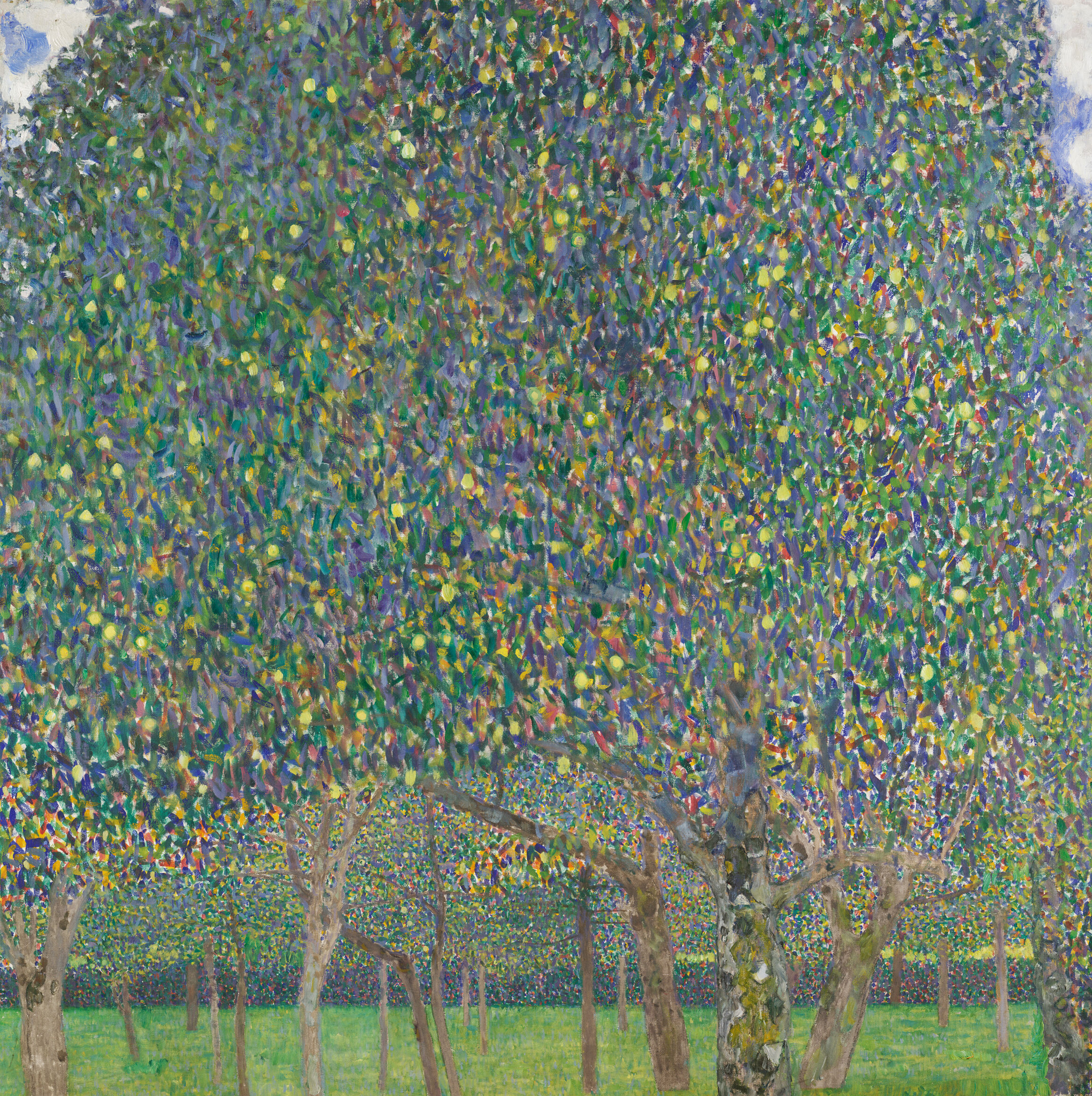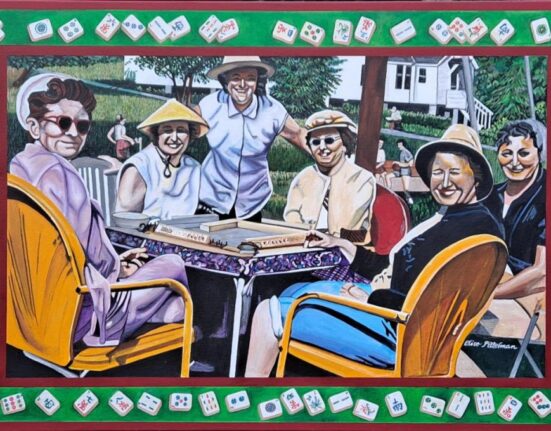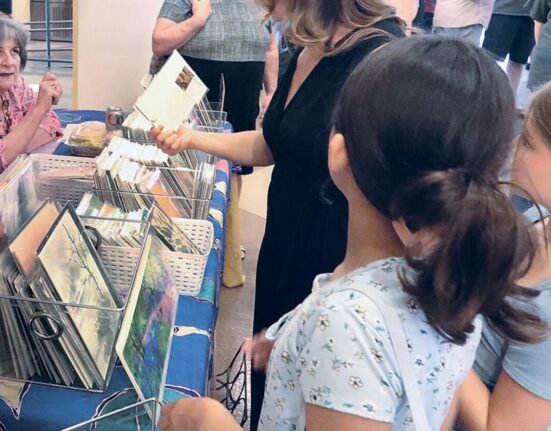Gustav Klimt, a Viennese Symbolist painter and co-founder of the Viennese Secession movement, first came to prominence as a mural painter. Later, he became known for his paintings of women, including those prominent in Viennese society around 1901–09. This period in the artist’s career was dubbed the “Golden Phase,” and was characterized by striking portraits adorned with glistening gold leaf, which have captured the public’s imagination for decades. Now however, the Neue Galerie is focusing on a significant part of Klimt’s oeuvre that has been overshadowed by the artist’s famed late portraits, with the exhibition “Klimt Landscapes.”
Installation view of Klimt Landscapes, on view at Neue Galerie New York. Image courtesy Neue Galerie New York, Photography by Annie Schlechter
Painted predominantly between 1898 and 1918, Klimt’s landscapes were produced for the artist’s own pleasure during summer vacations in the Austrian countryside, and in particular to Lake Attersee in the Salzkammergut region. These works form a substantial proportion of Klimt’s overall oeuvre and were celebrated during his lifetime.
Moriz Nähr, Gustav Klimt in the garden of his studio at Josefstädter Strasse 21, 1911. Courtesy of Neue Galerie, New York
In the winter of 1903, around 20 landscapes featured in the artist’s only substantial one-man show in Vienna before his death. Known for their innovative square format, which betrayed the artist’s interest in photography, and produced en plein-air (outside), an approach also favoured by the Impressionists, these bucolic works were praised by contemporary critics and were highly sought after by collectors.
Gustav Klimt, Printer: K. K. Hof-und Staatsdruckerei Reproduction of Sunflower (1907-08), Collotype with gold intaglio. First Publisher: H. O. Miethke, 1908-14. Reissued: Hugo Heller Kunstverlag, 1918. Courtesy of Neue Galerie, New York
The current exhibition combines highlights from the Neue Galerie’s Klimt collection with important loans from several private and public collections in the United States and Europe. Klimt’s nature scenes are contextualized in the broader trajectory of his artistic career, which developed from an academic painting style towards greater adoption of Symbolist and Art Nouveau tendencies.
Installation view of Klimt Landscapes, on view at Neue Galerie New York. Image courtesy Neue Galerie New York, Photography by Annie Schlechter.
Photography and design objects by artists of the Wiener Werkstätte (Vienna Worskhops) accompany Klimt’s paintings and emphasize the artist’s central position in the vibrant artistic environment of turn-of-the-century Vienna. The exhibition also accentuates Klimt’s important personal relationships, for instance with fashion designer Emilie Flöge, whose family the artist often accompanied on his productive summer vacations.
Heinrich Böhler, Gustav Klimt and Emilie Flöge,Kammerl/Attersee, 1909. Courtesy of Neue Galerie New York
“Klimt Landscapes” is on view at the Neue Galerie in New York through May 6, 2024. See more images from the exhibition below.
Gustav Klimt, Park at Kammer Castle (1909). Courtesy of Neue Galerie New York.
Gustav Klimt, Two Girls with Oleander, (ca. 1890–92). Courtesy of Neue Galerie, New York.
Gustav Klimt, Forester’s House in Weissenbach II (Garden), (1914). Photo: Hulya Kolabas. Courtesy of Neue Galerie New York.
Gustav Klimt, Fable (1883). Design for Allegorien und Embleme, no. 75a
Wien Museum, Purchase, Verlag Gerlach & Schenk, 1901 Photo: Birgit and Peter Kainz, Wien Museum.
Gustav Klimt, Idyll,1884. Photo: Birgit and Peter Kainz, Wien Museum. Courtesy of Neue Galerie, New York
Follow Artnet News on Facebook:
Want to stay ahead of the art world? Subscribe to our newsletter to get the breaking news, eye-opening interviews, and incisive critical takes that drive the conversation forward.







